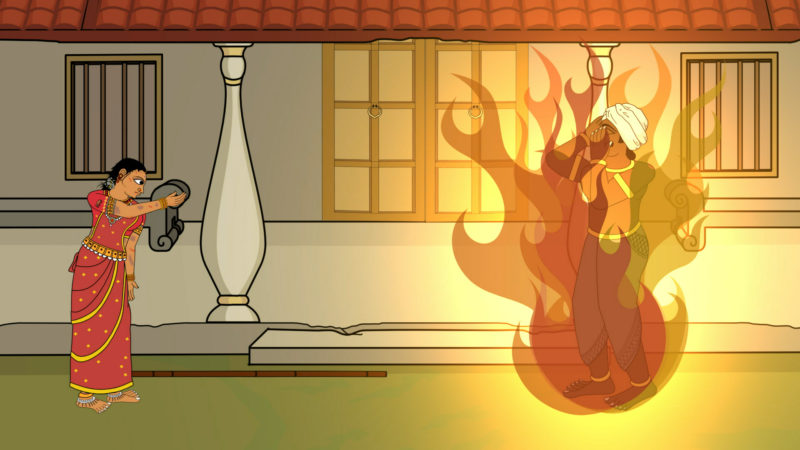
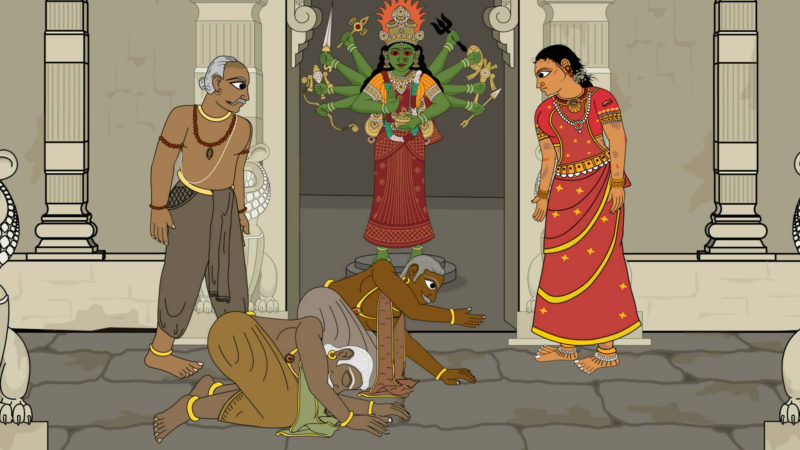


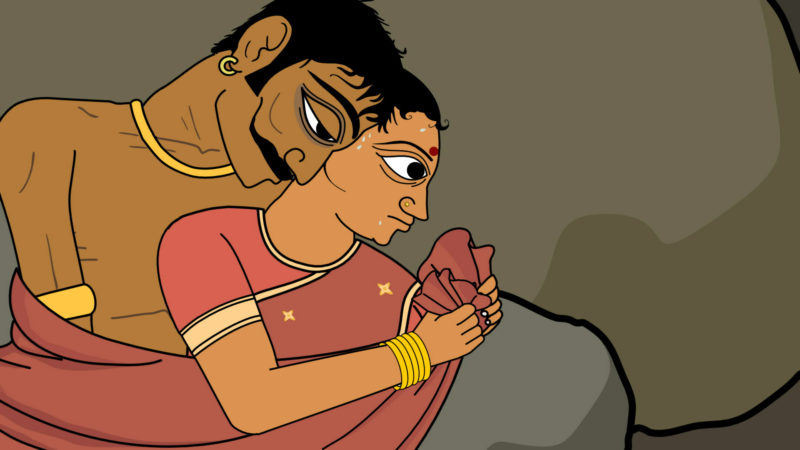
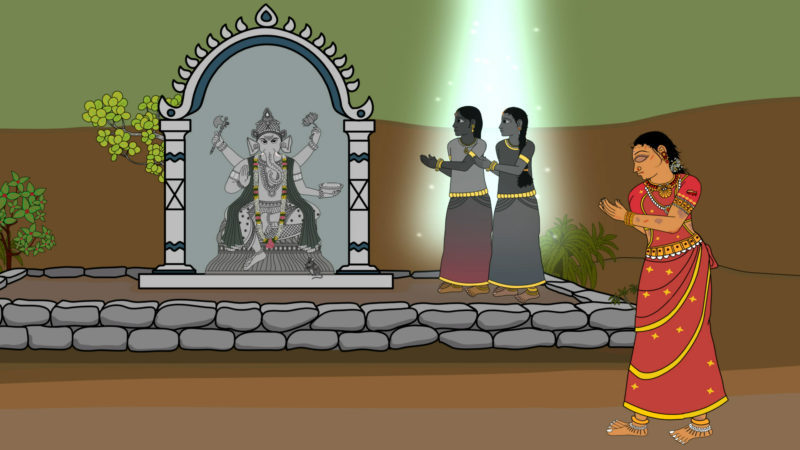
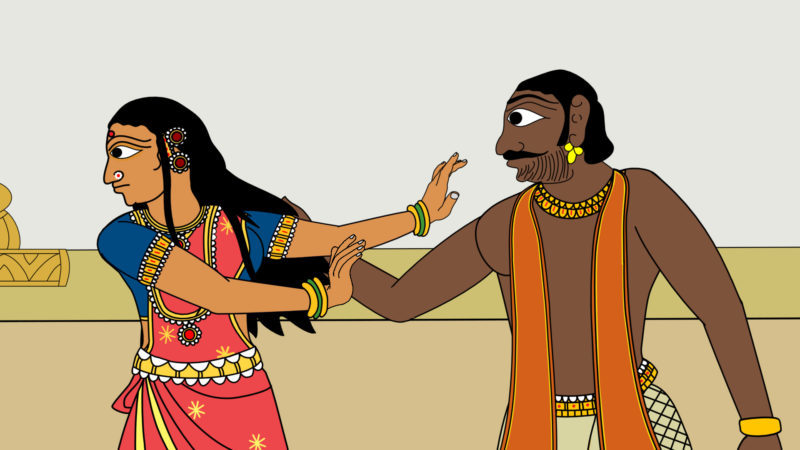
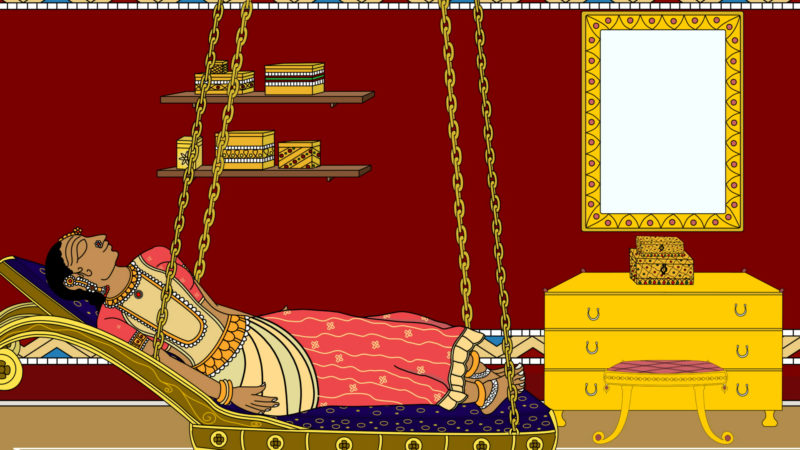
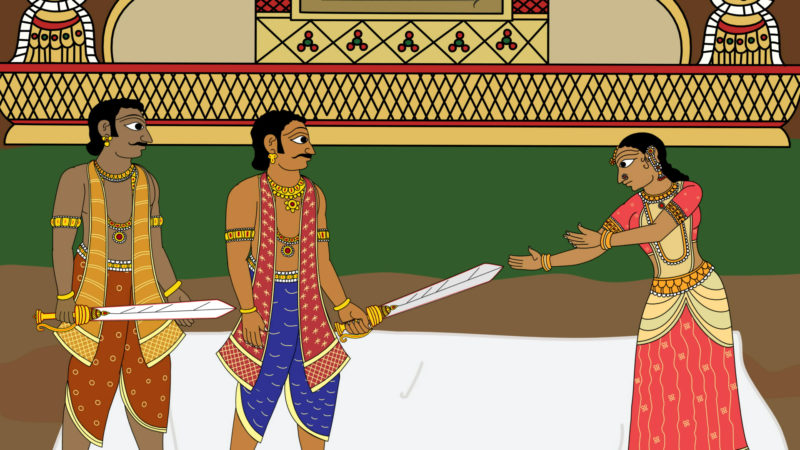
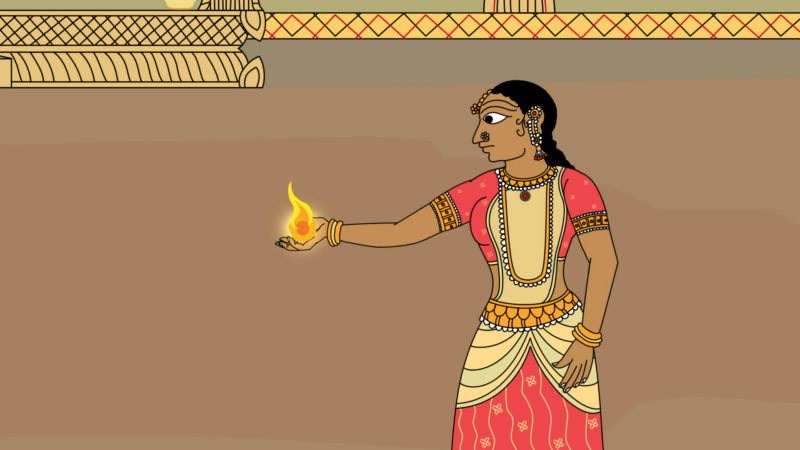
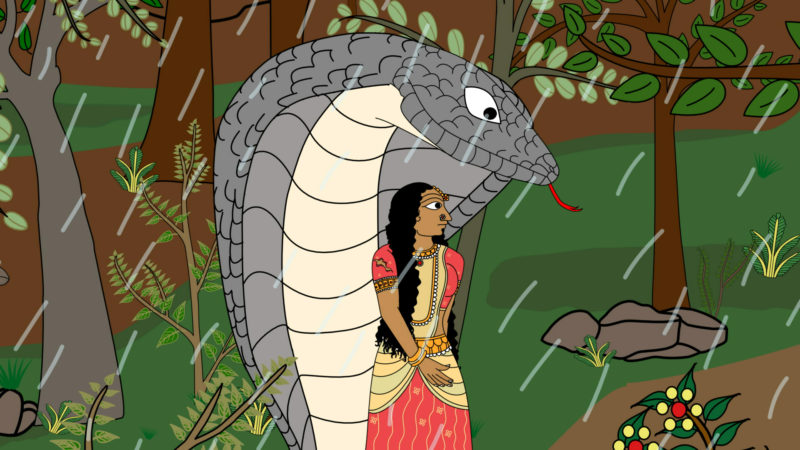
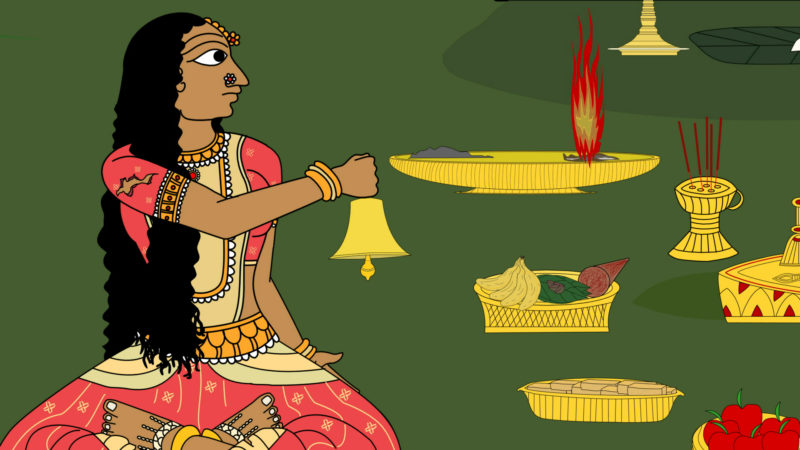
Tamarai and Tangal are two very important heroines in the Legend of Ponnivala story. Each abundantly demonstrates her independence, resourcefulness and ingenuity. Both of these women are chaste and respectable, even to the extent that others describe them as goddesses. These women’s adventures and personalities can be examined on many levels. One line of inquiry could be to compare them to women in the world’s other well known epics. Certainly the complex roles deep involvement of women in The Legend of Ponnivala story far exceeds that of leading females in stories such as the Iliad where Helen of Troy is largely depicted as a beautiful object, a trophy to be captured and raped. The closest parallel is likely found in South India’s famous Silapadikaram story where the heroine Kannagi functions as a strong character in her own right. Certainly Draupadi in India’s Mahabharata and Sita in the Ramayana have strong characters” too. But it can easily be argued that the women depicted in The Legend of Ponnivala outshine them both in their demonstrations of personal courage, fortitude and even in their broad display of magical power!